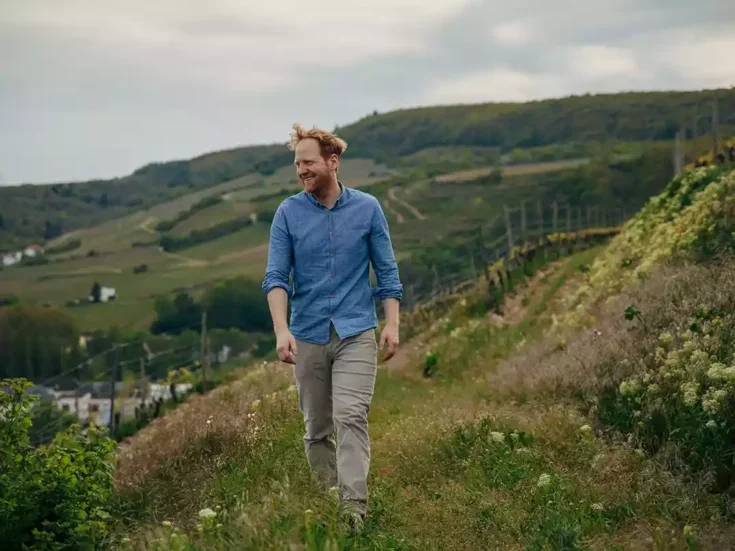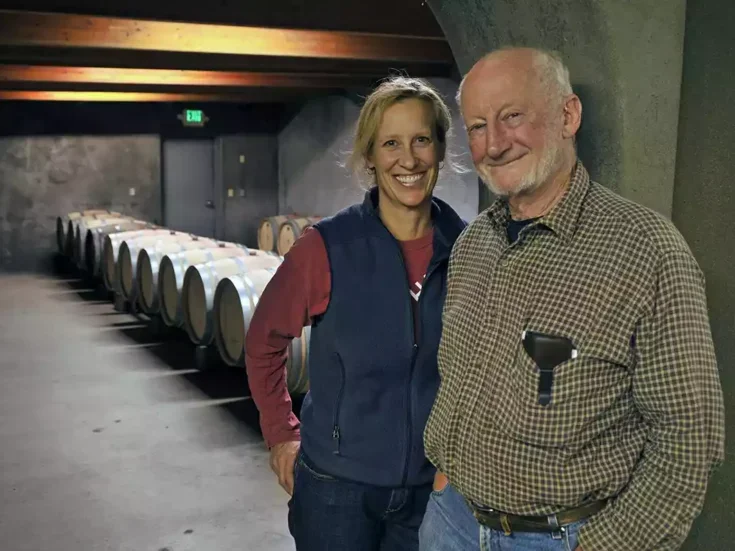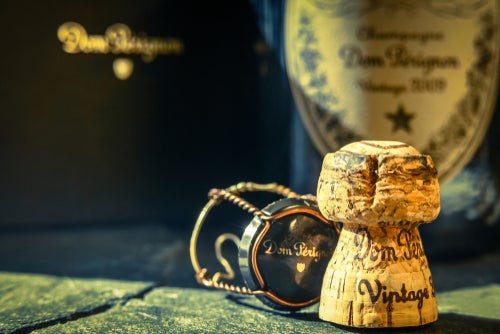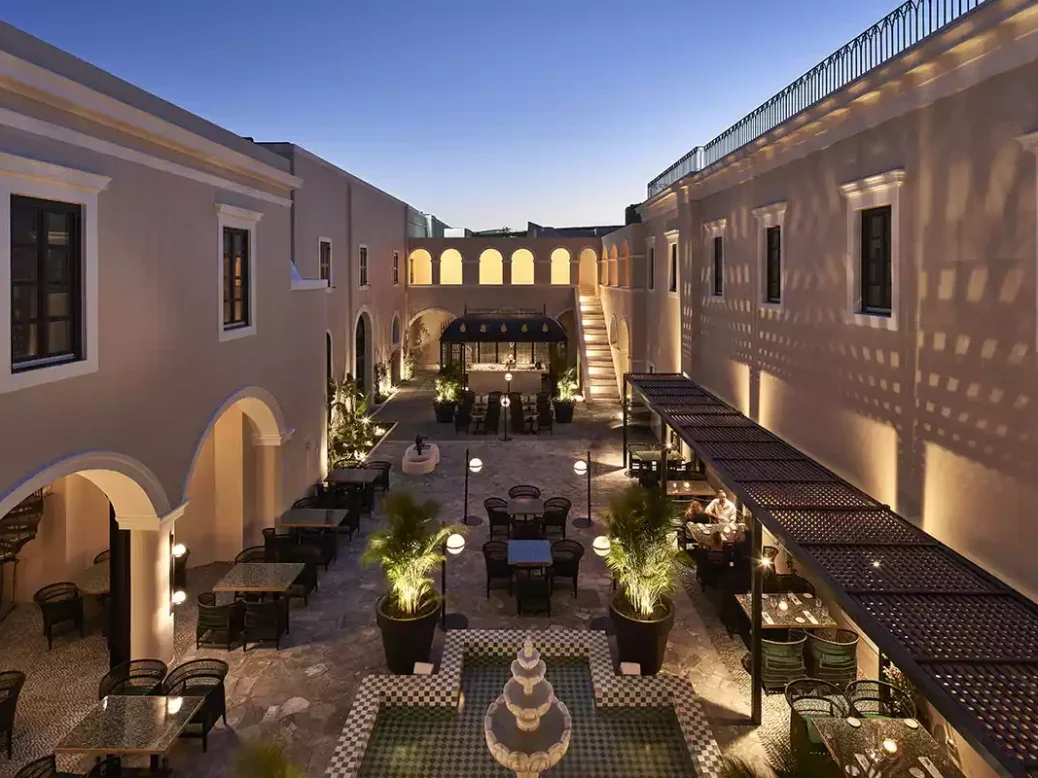
It is hard to imagine a better two-day event on a particular wine region than Santorini’s Vedema. A collaboration between Katikies Hotels and Yiannis Karakasis MW, it evolved from Selene Vedema, established by restaurateur George Hatzigianakis several years ago. Based at one of Katikies five-star hotels—Katikies Garden, a beautifully converted former monastery in Fira, the largest town—it is masterminded by the charismatic and dynamic Athens-based Karakasis, who is doing as much as anybody to highlight the distinctive personality and sheer quality of the island’s wines—not only through this annual event but also through his magisterial book The Wines of Santorini (2021) and his 50 Great Greek Wines project, involving no fewer than seven of his fellow MWs. I was lucky enough to attend last year’s edition, running September 29–30, 2023.
A remarkable Santorini tour d’horizon
The amazing setting—luxury accommodation, privacy, tranquillity, and spectacular views out over Santorini’s famous caldera—is of course part of the appeal, as is the culinary excellence of the Selene restaurant under its Michelin-starred executive chef Ettore Botrini and the passion and professionalism of the genuinely warm and welcoming young staff. But what makes the event perhaps uniquely satisfying and stimulating is the combination of focus and range: The entire event takes place in the same charming, convenient, and intimate surroundings but includes almost all of the island’s 21 producers (there are as many as 1,000 growers, but that’s another part of the story); in 2022, there were 17 at the all-afternoon walk-around tasting on the second day, and in 2023, 19. (One resident sommelier said he thought it might have been the first time that so many of them had been in the same room together, professional rivalries running strong.) Most producers showed a range of styles, and yet it was possible to taste every wine if one wanted, making it comprehensive without being completely overwhelming, in a way that would be impossible at many larger events. This gives attendees, whether expert or neophyte (I was certainly the latter, on my first visit to the island) a remarkable tour d’horizon in terms of contemporary issues and the personality, quality, and variety of the wines.
Assyrtiko and white Burgundy
On the first afternoon of the 2023 event, there were two masterclasses, with a sensible interval between the two. At the first, Karakasis was joined by Mark Andrew MW—co-founder of Noble Rot magazine and three London restaurants with the same name, who wrote his MW dissertation on the wines of Santorini—for a blind comparative tasting of five Assyrtiko-based white wines and five white Burgundies. The previous year, the comparison had been with Riesling, when even Jancis Robinson MW admitted to finding it “next to impossible to be sure of the correct answer” when asked to identify which of the two varietal wines served blind was which.
There were also remarkable similarities between the Assyrtikos and the Burgundies in taste terms—especially, for both Karakasis and Andrew, their marked acidity and their mineral drive, though they also agreed that the “minerality” was subtly different: more “chalky” for Burgundy, more “marine,” “salty,” or “smoky” for Santorini. The few differences they did identify made those all the more intriguing, Andrew suggesting that Chardonnay generally has a greater affinity with new oak than Assyrtiko, most of which now sees only stainless steel or older wood. (In his book, Karakasis says his preference is for no more than 20–30% new oak.) For me, another distinguishing feature was the still slightly higher alcohol levels of the Santorini wines—the rare combination of high alcohol and redeemingly high acidity being one of Assyrtiko’s most winning features—even with the greater heft of today’s climate-change-inflected white Burgundy.
As significant and striking as any of the other similarities, though, was that the Santorini wines were very much at the same very high level of quality. Karakasis had certainly chosen top cuvées from top producers (including Estate Argyros Cuvée Monsigniori, Gaia Wild Ferment Assyrtiko, and Artemis Karamelegos Nykteri), but Andrew had not pulled any punches either, offering a range of respected wines from Chablis, via the Côte de Beaune, to the Mâconnais (including Bessin-Tremblay Chablis Grand Cru Valmur, Domaine Paul Pillot Chassagne-Montrachet Premier Cru Les Mazures, and Domaine Chavy-Chouet Puligny-Montrachet Les Enseignères). And despite concern over the rising price of top Assyrtiko from Santorini (fueled by consumer demand, as well as by grape prices as high as €5/kg), its wines may well have had the edge in terms of value. (See also WFW 82, pp.120–27.)
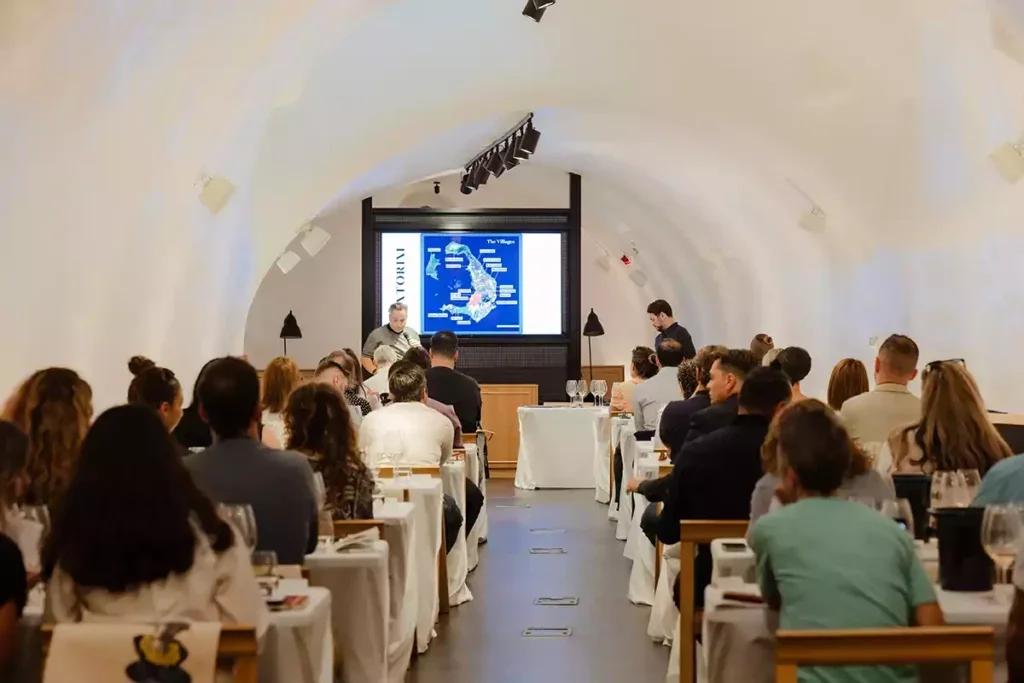
Nykteri: whence and whither
The second, equally fascinating and insightful masterclass, also presented by Karakasis and Andrew but this time with two guest producers—the highly influential, pioneering Paris Sigalas (now at Oeno P, having sold his share in his eponymous winery) and Petros Vamvakousis (Venetsanos)—was titled Santorini Nykteri: Past, Present, and Future. This historic wine style takes its name from the Greek word for “night” (nykta), which, traditionally, was when very ripe grapes, picked the same day, late in the season (September), were pressed, and the free-run juice was fermented and matured in large, old oak vats, which were only partly filled, sealed, and not topped up, resulting in a deliberately oxidative style. Some of the wines developed flor, some had residual sugar of 6–8g/liter, and alcohol levels could be as high as 16%. But they were normally more “aristocratic, elegant, and refined,” explained Karakasis, than Brousko wines, for which the grapes might not be pressed and fermented until a few days after they were picked, spending longer on their skins and taking on more tannins. Some compare traditional Nykteri to Sherry, though Andrew dismissed this as something of a “red herring,” proposing that Jura wines were closer to the mark (and recommending poulet au vin jaune, as well as pork dishes and a wide range of cheeses as suitable food matches).
Karakasis explained that while Nykteri has a distinguished “past,” it has a confused and confusing “present,” as a result of the very loose and rather meaningless legal definition now in force, which requires only that the alcohol level is at least 13.5% and that the wine spends at least three months in oak. But when Assyrtiko is naturally high in alcohol and the average, even for earlier harvested wines, is 13.5%, too many wines qualify; some producers use the term simply for their top wine, while others who could use the term eschew it as either irrelevant or too vague. Andrew described the style as being stuck in “no man’s land,” with little or no consumer recognition or understanding of the term; and the 16 wines offered for tasting—some described as Oak Fermented, Reserve, or Grande Reserve rather than Nykteri, Nikteri, or Nychteri—were certainly very different in taste terms, even if most were very impressive in their own way. At least one, Oeno P’s Akulumbo 2021—very elegant, refined, and subtle, as well as concentrated, layered, and silky, with only very gentle valedictory grip—did not see any oak at all, being aged, like all the wines Sigalas now makes there, in “amphorae.”
As for the “future,” Andrew sketched out two possible ways forward. The first would be to require all oak-aged Assyrtiko to be PDO Nykteri (there is currently only one PDO, Santorini, for both dry and sweet wines); while the second would be to clarify a definition of traditional Nykteri then draft modern, much stricter rules to secure that style. He accepted that the second option would result in a more niche category but also admitted to finding it the “more exciting” possibility, and welcomed the freedom producers of oak-aged wines would have not to use the term if they didn’t want to. Sigalas expressed the hope that like-minded producers might be able to form an association that would adopt such stricter rules, but that they should include the possibility of some residual sugar, depending on the vintage. His gloriously intense, pure, saline, and sumptuous Sigalas Nychteri 2020 has 6–8g/l residual sugar, he revealed. Andrew pointed out that sweetness levels that varied each year might require more explanation and more hand-selling—like some Alsace or Loire wines—but he clearly felt this would be part and parcel of being more niche and more “natural” (as in more respectful of the season) and suggested that, as for those French regions, an indication of sweetness on the label would help. Vamvakousis stressed that any new, stricter rules should include viticulture, as well as winemaking.
Celebrating and preserving tradition on Santorini
Away from the more formal masterclasses, discussions with Karakasis about the future of Santorini ranged far and wide, and he did not in the least disguise the many challenging issues. While being evangelical in his zeal for the island and its wines, he emphasized the fragility, as well as the unique strengths, of the current situation: the awkward balance of power between the 750–1,000 small grape growers (most owning less than 0.5ha or so) and the 21 producers, with the concomitant difficulty of moving toward better, more organic and sustainable viticulture, and the temptation to sell land at a large profit to developers keen to cater to the ever-growing number of Santorini’s tourists; climate change, ever-older vines, ever-lower yields (as meager as 5hl/ha in difficult years like 2023), and possible partial remedies, including irrigation and the replacement of the traditional kouloura-trained vines (the roots often 100–200 years old) with more productive kladeftico-trained vines; and the need to be more measured and precise with sulfur-dioxide additions in the winery, which should be neither too low (risking oxidation or other problems) nor too high (robbing the wine of expression and trapping it in a “golden cage”). While embracing the need for innovation and improvement, especially in viticulture, Karakasis clearly identifies as paramount the meaningful preservation and protection of the island’s precious and unique traditions in the face of the many threats.
The overall atmosphere at the festival, however, was celebratory, and never more so than at the very ambitious and accomplished dinners each evening in the Selene restaurant, set in the charming courtyard. Here the atmosphere was animated and expectant, with a gentle hum of conversation, but also very relaxed, with suitably restrained live music.
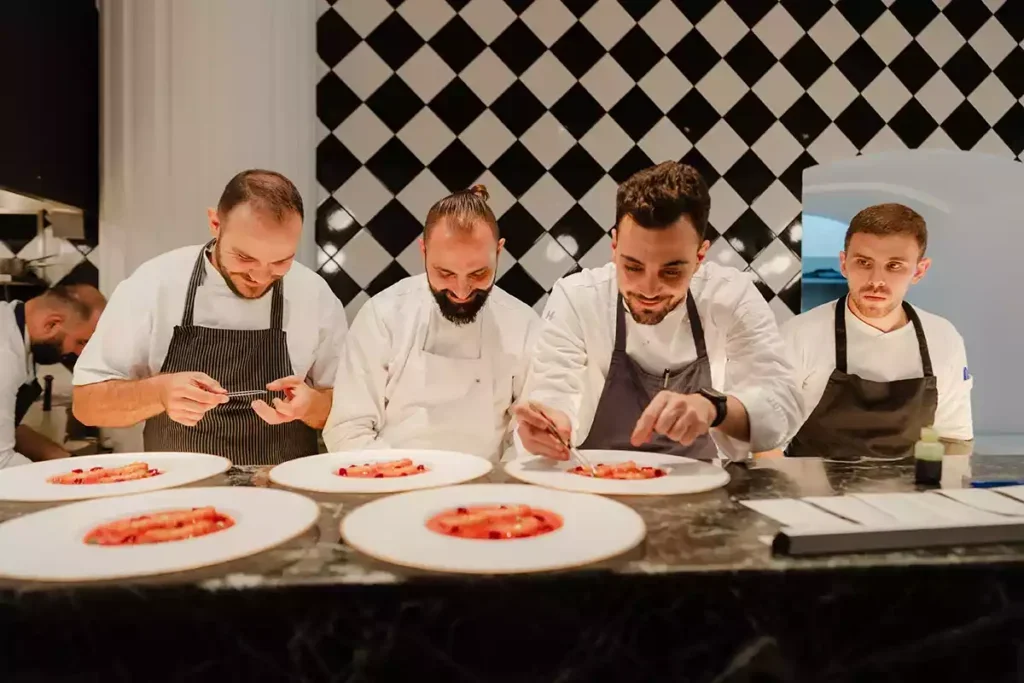
On the first evening, the degustation dinner, Gastronomic Journey, was prepared by chefs from all of the Katikies restaurants. The 12 courses—all beautiful, all delicious, many superlative by any standard—ranged from the likes of “Landscapes of Pumice” (smoked eel, crunchy waffle, fava, capers, pollen), through “Matrix” (crayfish, white chocolate, ginger, lime, green-apple gel, caviar), to “Lamb” (milk-fed lamb, Tinos artichokes, chickpeas, sage). After an appetizing glass of Santo’s traditional-method sparkling Assyrtiko, all of the dinner wines—carefully selected by Karakasis, the Katikies wine consultant—were also, very properly, from Santorini. But only two were Assyrtiko (the second being the spellbinding Oeno P Tria Ampelia Pithari 6 2021, where the exhilarating purity and transparency showed how vividly amphorae can translate this special volcanic terroir, without any extraneous aromas, flavors, or texture from wood). Karakasis clearly wanted to emphasize the point, already made at the walk-around tasting, that while Assyrtiko may be the superstar grape variety, there are others—33, in all, though this is dramatically down on the grand total of 66 in former times. The first white wine was Argyros Athiri 2022, from a variety that is not normally offered as a varietal wine—enigmatic, lightly herbal, subtle; while the second wine was an intriguing pale rosé, the Gavalas Voudomato 2022—finely fruity (pomegranate), floral, pure, savory, seductively supple. The red wine was the Venetsanos Mandilaria 2019—darkly hued, enticingly fragrant, floral (roseate), herbal, elegantly silky, fine-grained, and gently supportive (rather than with the normally robust tannins of the variety), a distinctive and engaging personality but very classically proportioned.
The second evening, there was a “four-hands dinner” dubbed Selene Welcomes Etrusco, featuring chefs Ettore Botrini and Nikos Billis. Among the imaginatively named, impeccably presented dishes were “God Loves Caviar” (caviar, cauliflower, beurre noisette), “Reference to Caravaggio” (red prawns, tomatoes from last summer, wild celery, strawberry), and “Columbina before the Wedding Night” (squab, peach, herbs). It’s always a sign of confidence, as well as a genuine passion for wine, when a producer or sommelier serves wines from another region, as Karakasis did here, including Krug Grande Cuvée (170th edition), Henri Bourgeois Jadis Sancerre 2018, Nervi Conterno Il Rosato 2021, and Marquis d’Angerville Volnay Premier Cru Fremiet 2017. But it was powerful testimony that the only two wines from Santorini were as exciting as any: the Artemis Karamolegos Ftelos Assyrtiko 2020—grand in scale but subtle and gently scintillating (a magnificent match with the “Royale à la Grecque” [lobster broth, shellfish, Greek coffee, curry]); and the Venetsanos Vinsanto 12 Years Old—fresh and herbal, as well as raisined, finely focused, finishing almost dry, with light bitterness and a phenolic nip (perfect with the “Bitter Chocolate Tart” [carob, sweet eggplant, “diktamo” ice cream]).
The 2024 edition of Vedema, September 20–21, will be different in detail but similar in structure, again with two masterclasses—Volcanic Wines: The Power of Terroir, and Divine Drops: Vinsanto, Vin Santo & Tokaji, both presented by Yiannis Karakasis & Wojciech Bonkowski MW—as well as the walk-around tasting and two equally promising dinners, one devoted to Gaja wines in the presence of Angelo Gaja’s son Giovanni. Any wine lover who can go, should.

